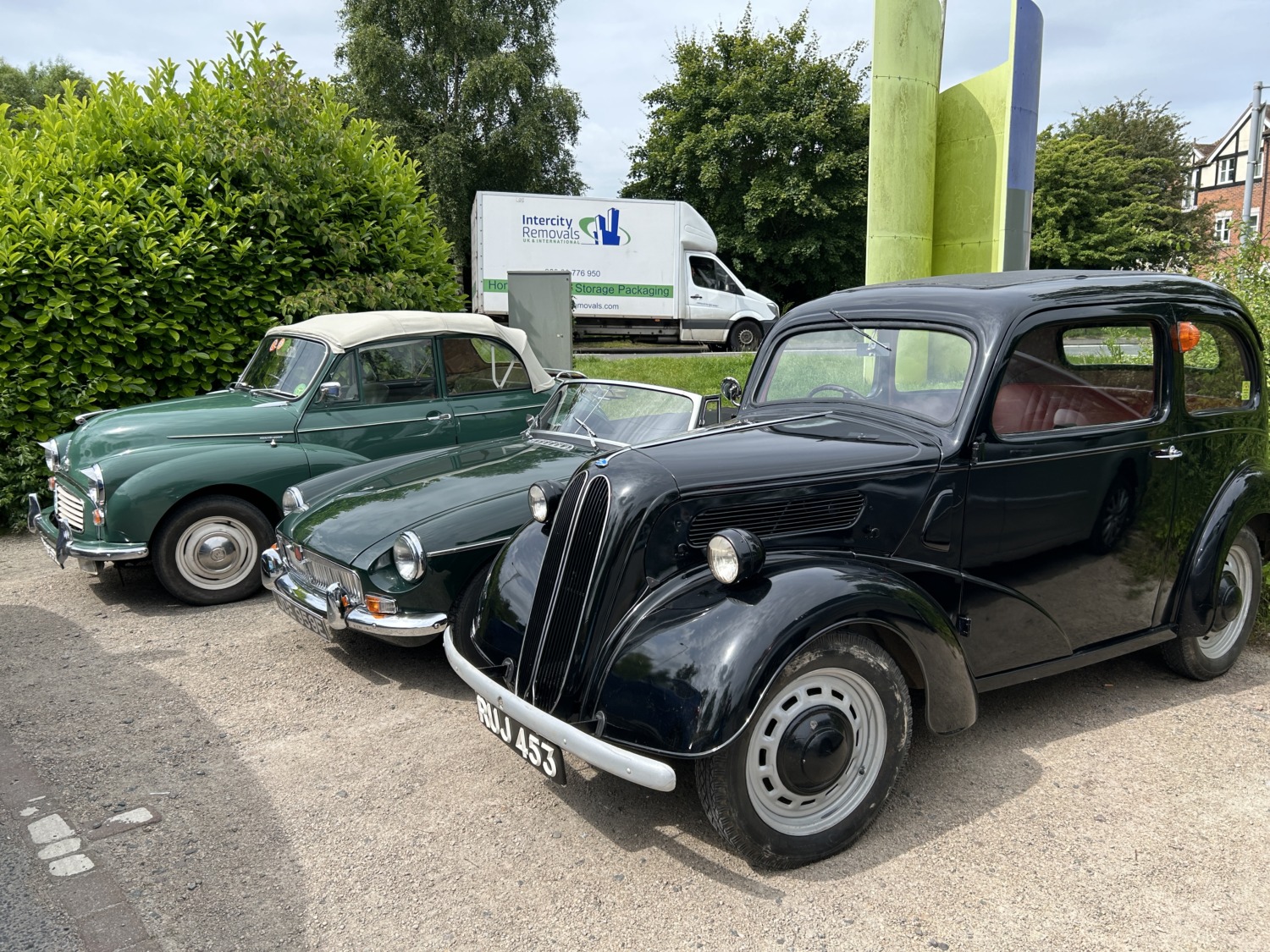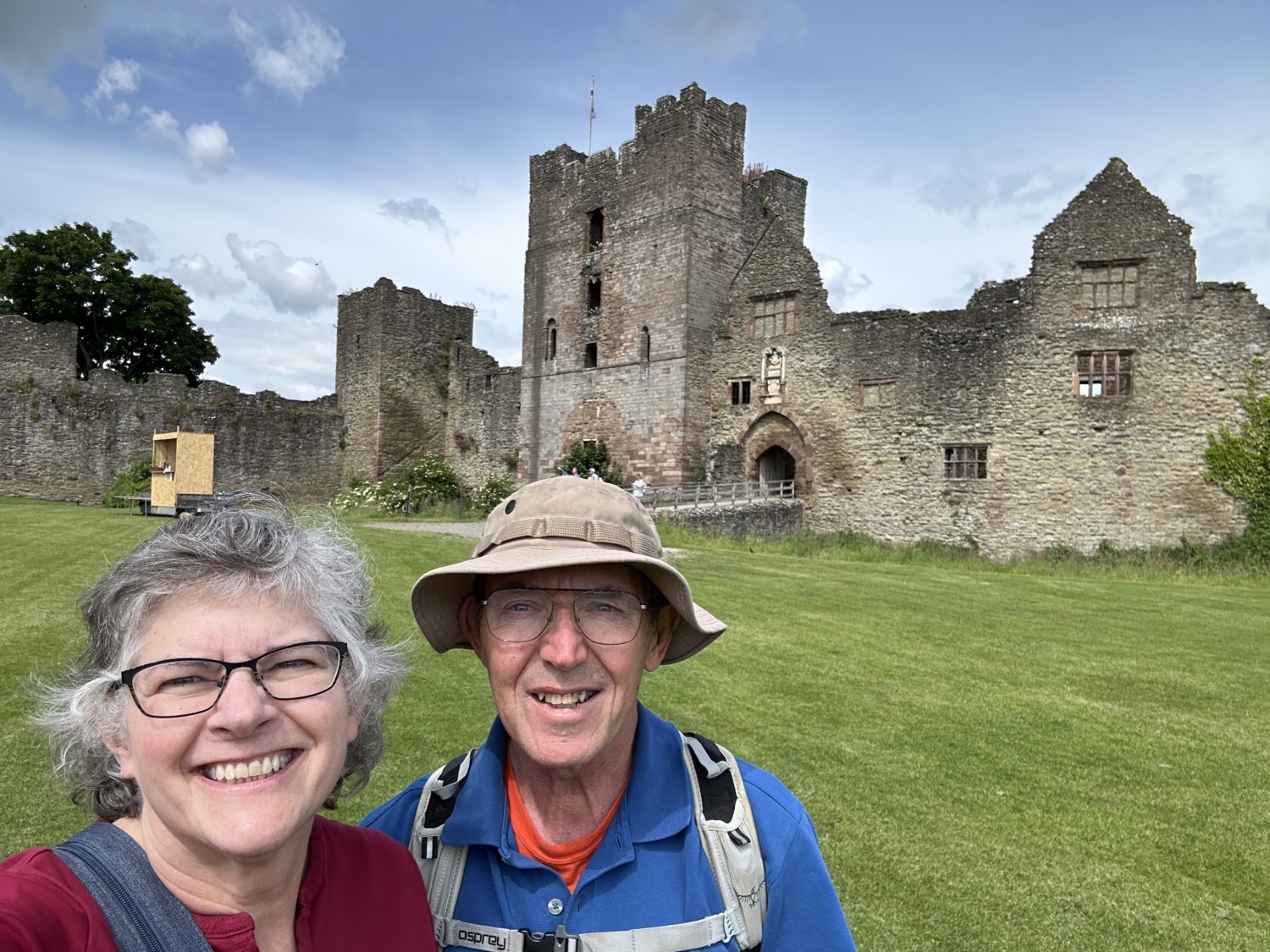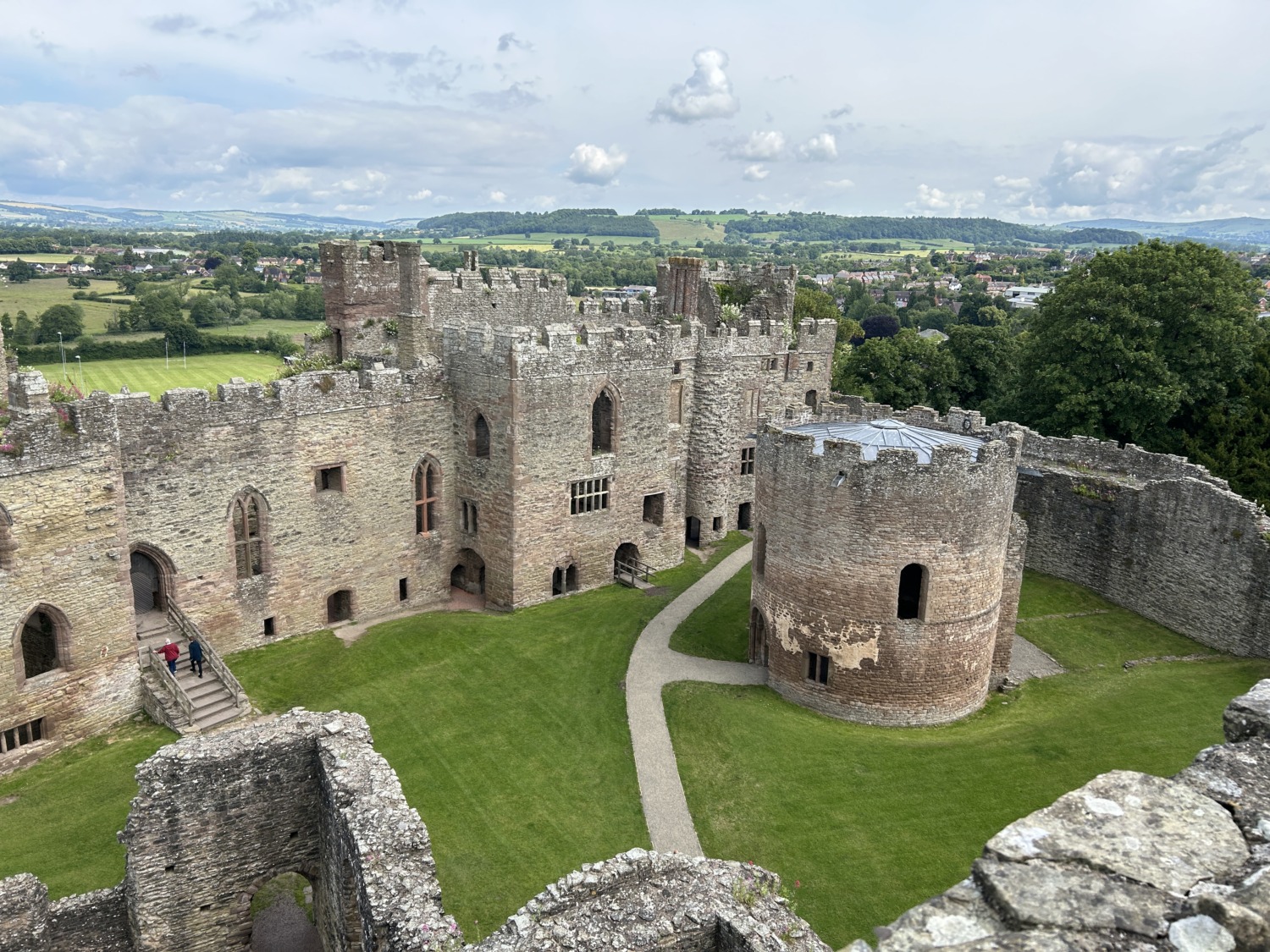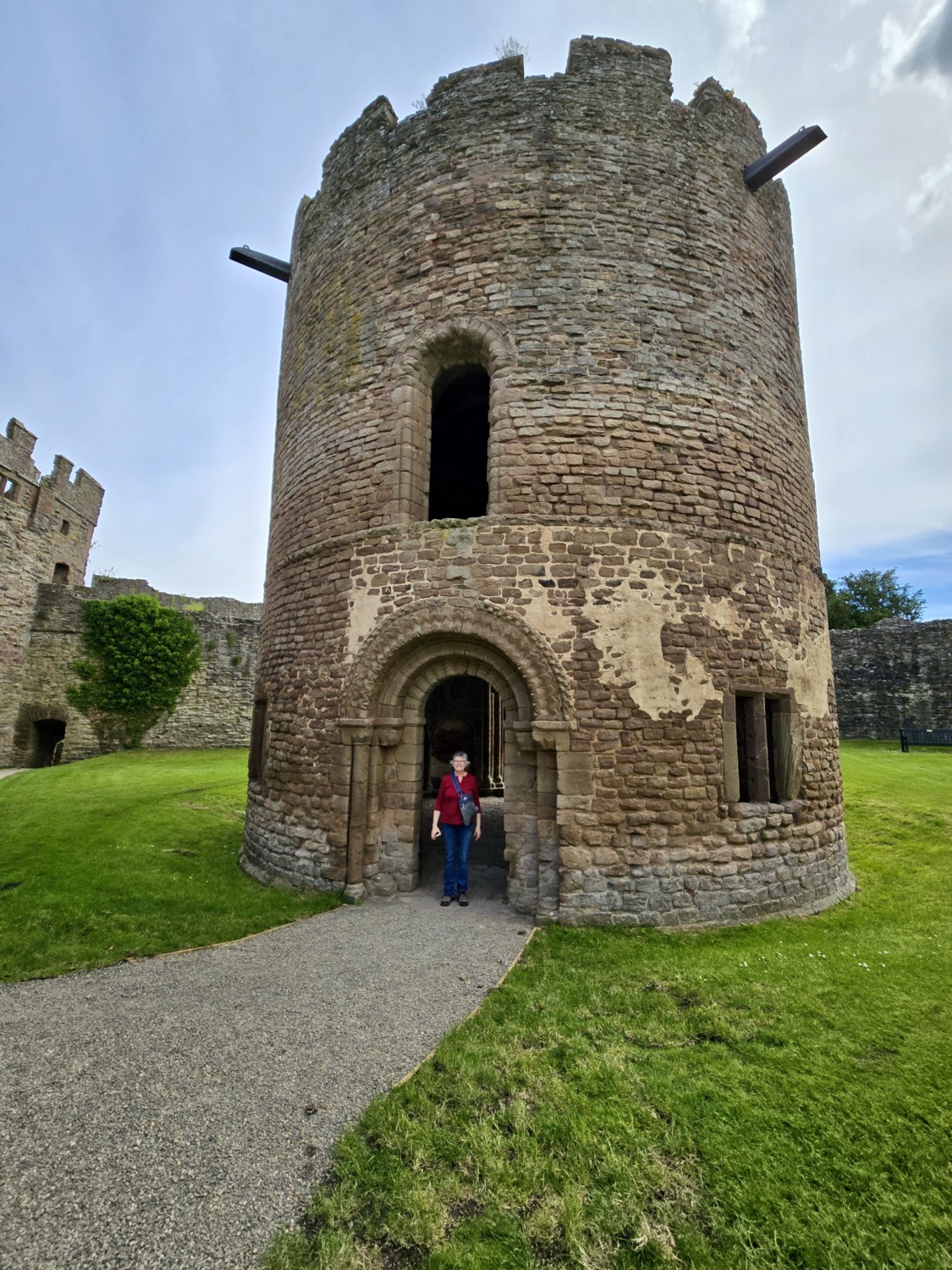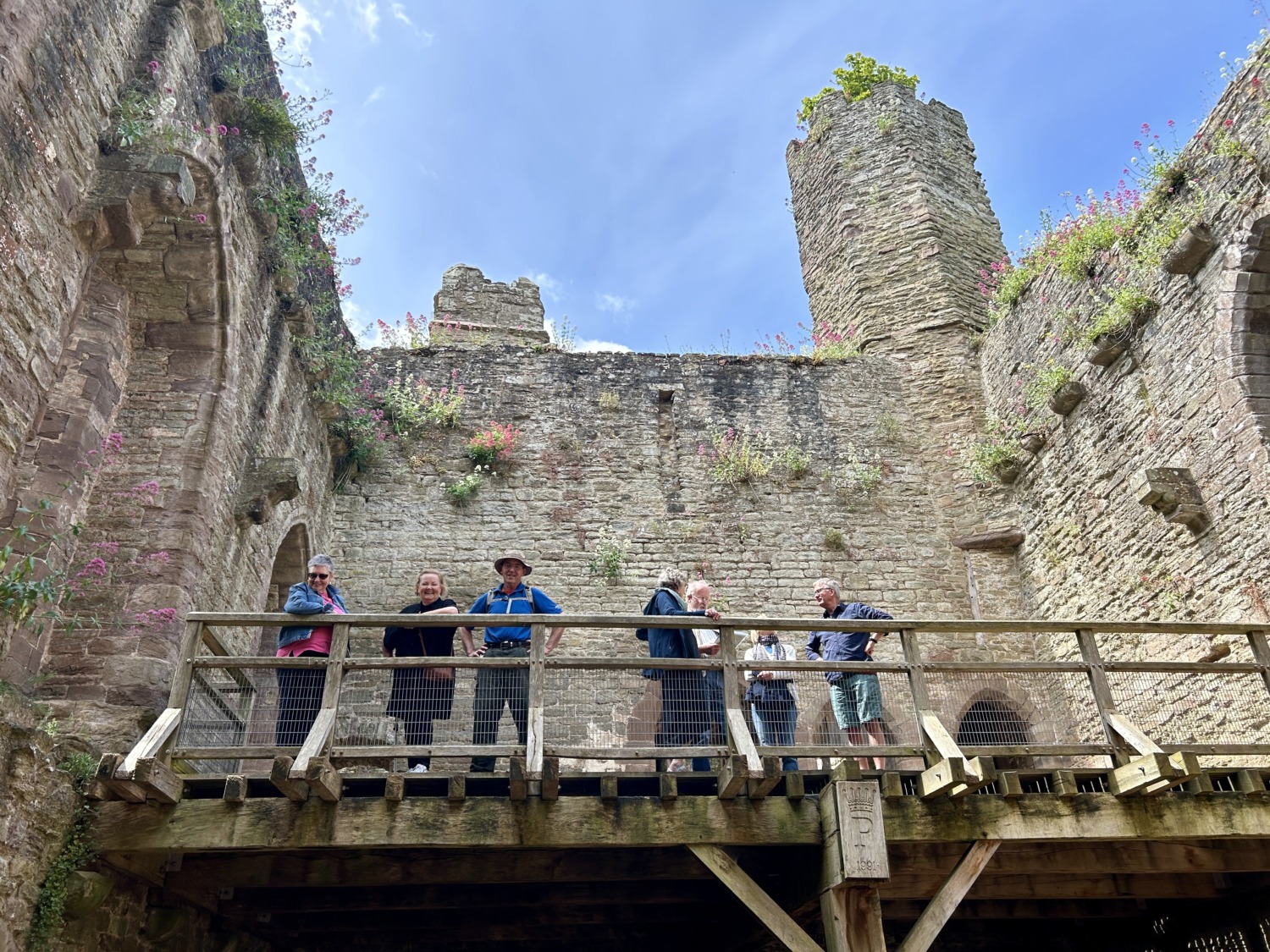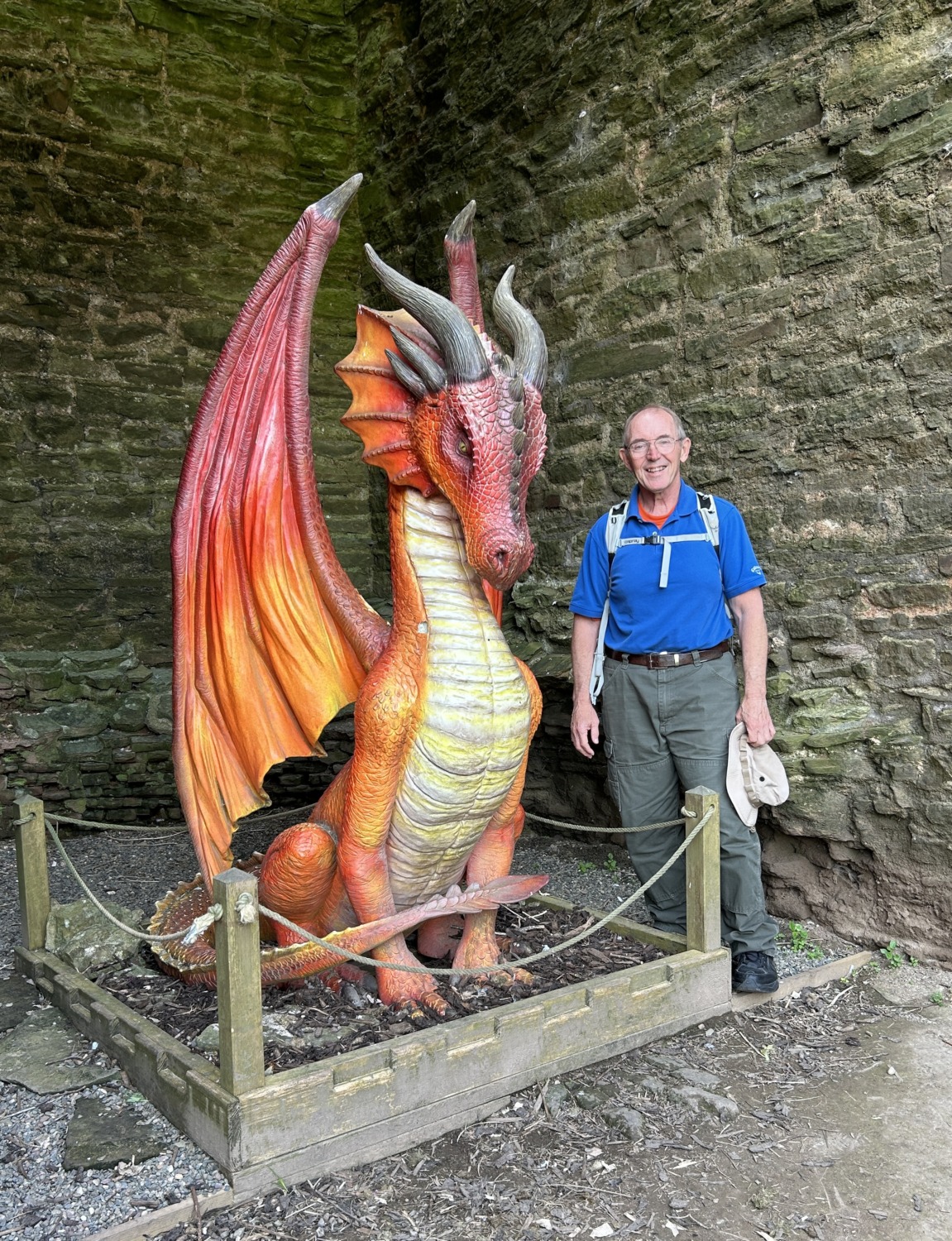Our second day in Wales wasn’t really in Wales very much. The highlight of the day, Ludlow Castle, was in England. Our tour traveled along the border between England and Wales, so we went back and forth. This is an area called the Welsh Marches. The term was originally used to designate the place where the Marcher lords had specific rights. These Marcher Lords were appointed by the king of England to watch over the border between England and Wales. Today the term is used to describe the counties which lie along the border.
Our first stop of the day was the Shropshire Hills Discovery Center. It was an odd building with a stuffed wooly mammoth outside. Not a life-sized one. A small, stuffed, wooly mammoth like you might buy for a child. There was a nice gift shop and the all-important restrooms. Tom and I took a quick look at the trails into the hills behind the Discovery Center. A hike was very inviting, but we would have missed our bus! Instead, we looked at the antique cars in the parking lot. The Knighton Historical Vehicle Club was having a tea break inside the discovery center.
Nigel, our tour guide is a big football (soccer) fan so we have been learning about British football. They have four professional leagues with 92 teams. If a team wins their league, then they move up to the next level the next year. If a team comes in last in their league, then they move down a level. It seems a good system, but I was thinking about how it might look with US football or baseball. The two teams I follow, the Browns and the Guardians, would have done a lot of moving up and down the leagues during my lifetime.
Our next stop was the lovely town of Ludlow. It was our lunch break, but we had two hours for the stop. Luxury! It was early for lunch, so Tom and I headed for Ludlow Castle. The castle was founded by Walter de Lacy after the Norman Conquest and was one of the first stone castles to be built in England. During the civil war of the 12th century the castle changed hands several times between the de Lacys and rival claimants, and was further fortified with a Great Tower and a large outer bailey. In the mid-13th century, Ludlow was passed on to Geoffrey de Geneville, who rebuilt part of the inner bailey.
Roger Mortimer acquired the castle in 1301, further extending the internal complex of buildings. Richard, Duke of York, inherited the castle in 1425, and it became an important symbol of Yorkist authority during the Wars of the Roses. Ludlow Castle was chosen as the seat of the Council of Wales and the Marches, effectively acting as the capital of Wales, and it was extensively renovated throughout the 16th century. Ludlow Castle was held by the Royalists during the English Civil War of the 1640s, until it was besieged and taken by a Parliamentarian army in 1646. The contents of the castle were sold off and a garrison was retained there.
With the Restoration of 1660, the council was reestablished and the castle repaired, but Ludlow never recovered from the civil war years. When the council was finally abolished in 1689 it fell into neglect. Henry, 1st Earl of Powis, leased the property from the Crown in 1772, extensively landscaping the ruins, while his brother-in-law, Edward, 1st Earl of Powis, bought the castle outright in 1811. A mansion was constructed in the outer bailey but the remainder of the castle was left largely untouched, attracting an increasing number of visitors. After 1900, Ludlow Castle was cleared of vegetation and over the course of the century it was extensively repaired by the Powis Estate and government bodies. In the 21st century it is still owned by the Earl of Powis and operated as a tourist attraction.
The architecture of Ludlow reflects its long history, retaining a blend of several styles of building. The castle is approximately 500 by 435 feet in size, covering almost 5 acres. The outer bailey includes the Castle House building, now used by the Powis Estate as offices and accommodation. The inner bailey, separated by a trench cut out of the stone, houses the Great Tower, Great Hall and Great Chamber block, along with later 16th century additions, as well as a rare, circular chapel.
We were able to walk all around the castle ruins. Two other couples from our group were also exploring the castle at the same time, so we wandered around with them, taking pictures of each other. We climbed towers, peered out windows, and explored dark passages. Really fun.
After thoroughly exploring Ludlow Castle, we strolled through the market square of Ludlow. Although Ludlow isn’t big, they have enough tourists that they had a lovely selection of shops and restaurants. We saw Dougie, our bus driver, and asked him where he recommended for lunch. He had just picked up some food from Price’s Bakery across the street, so Tom and I decided to check it out. It turned out to be a delightful place to eat. The chicken pastie was very good (we split it) and we also split a Millionaire Bar, which is Tom’s new favorite thing. They aren’t my favorite because the shortbread part is usually too crumbly. But this one was excellent. The shortbread was moist and did not crumble at all.
The owner of the bakery came out to talk to us a bit. She told us about some of her favorite spots in town. One of them was the church with its carvings in the quire. Another one, that she said we needed to visit, was an Elizabethan brothel. You could tell it was a brothel because of the naked lady carving on the outside of the building. It was just around the corner on Raven Lane.
Of course Tom and I headed to Raven Lane as soon as we were finished with lunch. As we were walking, we spotted Nigel and told him of our quest. He joined right in because he is always looking for quirky new places. We walked along Raven Lane until we spotted the half-timbered building. Unfortunately, the front was covered with scaffolding. But there was a guy up several levels and we asked him if there was a carving of a naked lady on the front of the building. He affirmed there was, and then offered to remove some scaffolding so we could see it.
We hated to interrupt his work, but he assured us it was no problem. He removed several boards and we could just barely catch a glimpse of everything except her head. She was indeed naked. Nigel commented that it was a fine view of her bosoms. That was an interesting side trip. When we got back on the bus, Nigel mentioned it to the rest of the tour group and promised to take a picture and put it on Facebook when he is back in Bath in September.
Before returning to the bus, we walked around the outside of the church. Tom and I have taken to alternating church days and castle days. Our stop in Ludlow was a castle day, so we didn’t go in the church. As we were walking around the church, we saw an really nice half-timbered house. While we were admiring it, a local woman told us it was the oldest building in town, and told us to be sure to check out the carvings on the front.
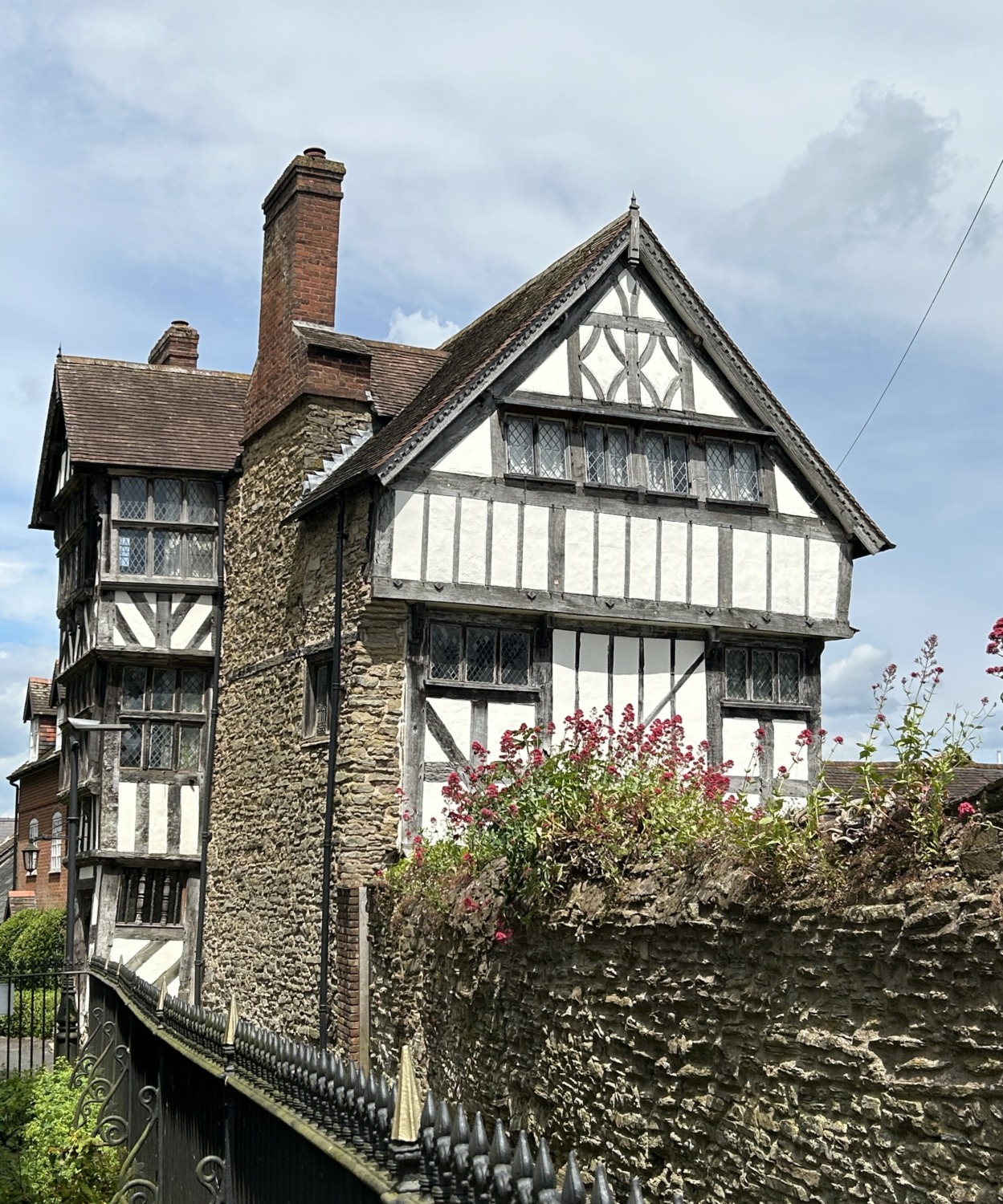
As she was talking about carving, she asked us if we had been inside the church. When we replied that we had not, she also mentioned that we had to see the quire carvings. People in town are proud of their carvings! She also mentioned that the church had the “heart” of Arthur, Henry VIII’s older brother who died before he ascended the throne. But she wanted us to understand that, when she said heart, she meant intestines, which were called the heart during the Tudor era. Try reading Shakespeare with that interpretation of heart.
We did not go inside the church, despite all the citizens’ urging. Instead, we went in search of some ice cream. It was the first warm, sunny day we had on the trip and it was perfect for ice cream. I got some wild berry ice cream. Tom decided not to have any. He missed out.
Back on the bus, we finally headed into Wales. We mostly admired the scenery until we we got to Cardiff, our destination for the night. We were supposed to see Cardiff Castle, but it was closed to set up for a special Pride event the next day. Instead, Nigel tried to take us on a short bus tour of Cardiff. He hadn’t reckoned on rush hour traffic and he finally told Dougie to give up and head for the hotel.
Our day ended with a Welsh dinner and cultural evening. Tom and I went to the Caelidh for Scotland and
the Gaelic Roots for Ireland. Of course we had to go to the Welsh evening. I tried to eat traditional
Welsh items for dinner. I had leek and potato soup as a starter, lamb and mint pie for a main course,
and berry roulade for dessert. Everything was good but I only ate about half. Just too much food.
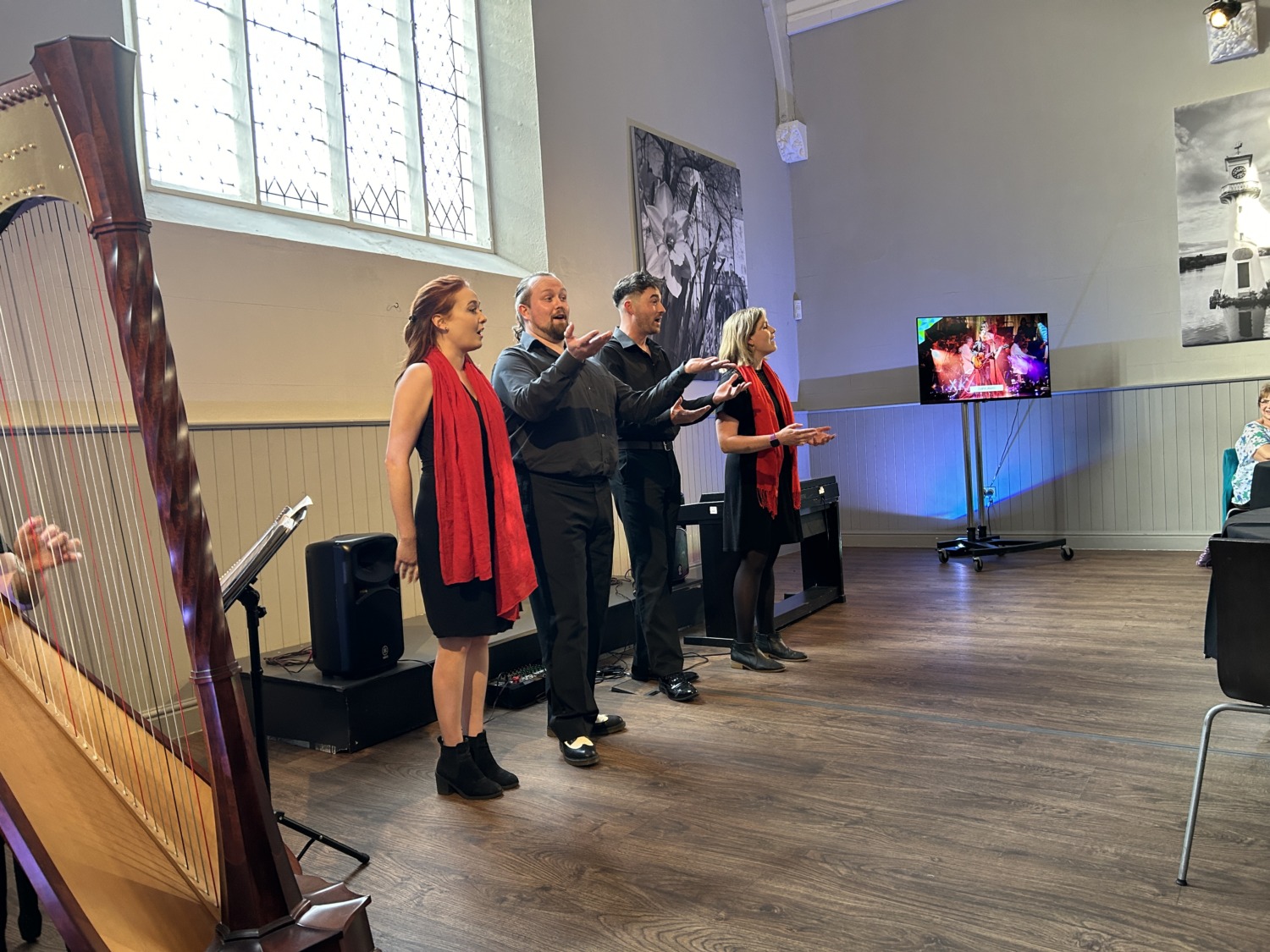
Before, during, and after our meal we had harp music, stories, and singing. There were four singers and
they were all very good, but I found their song selection a little odd. The songs were 1) written in
Welsh originally or 2) written by someone from Wales. So we had “Delilah” by Tom Jones, who was
born in Wales, the hymn “Cwm Rhondda” (Bread of Heaven), and “Her Mother Came Too” by Welsh
composer Ivor Novello. I expected more Welsh folk songs or pieces that were uniquely Welsh. The Scottish
have bagpipes. The Irish have Irish dancing. And the Welsh have …..?
By the time dinner was over and we returned to our hotel room, it was time for bed. Another long and
very full day.

